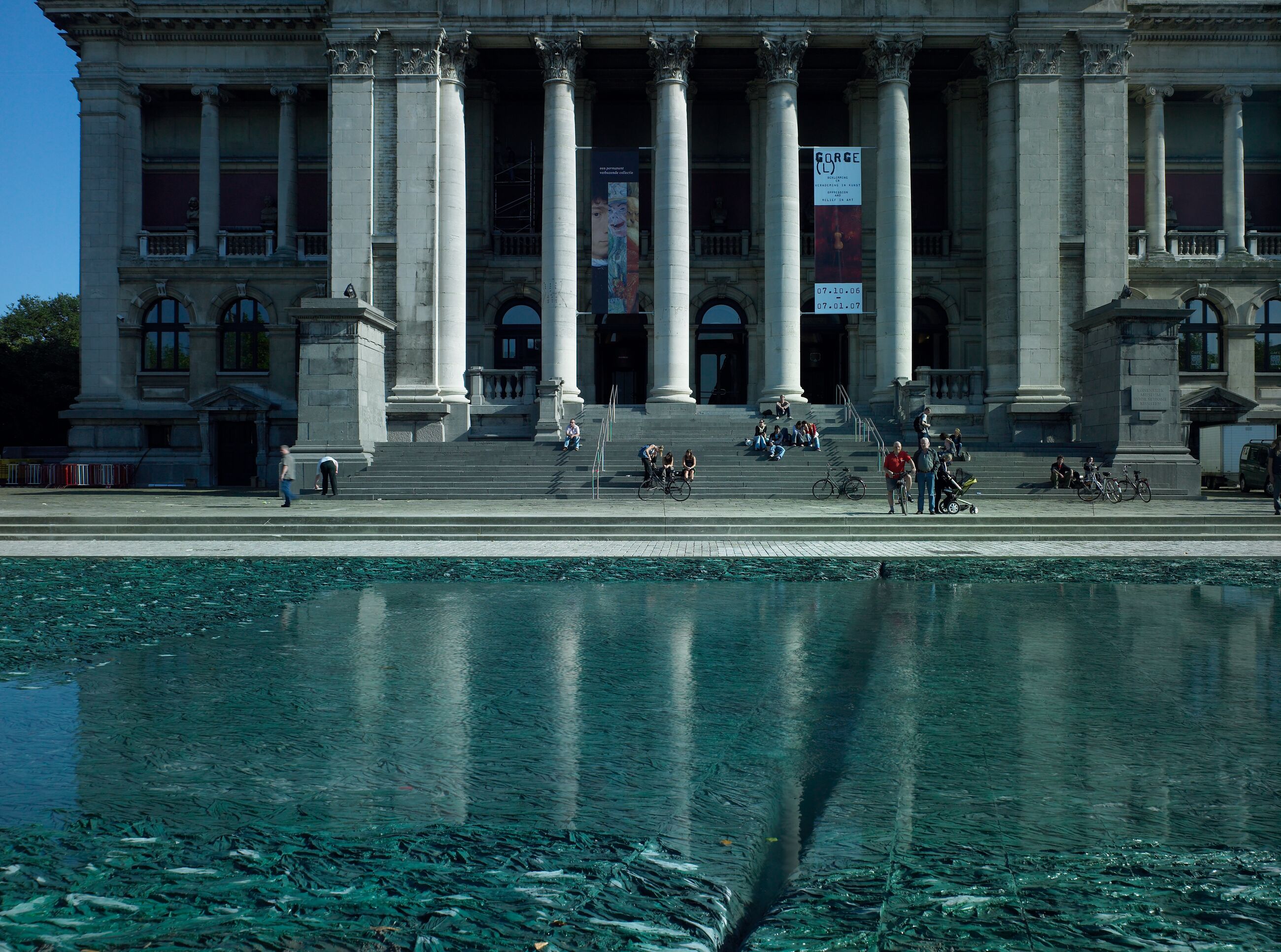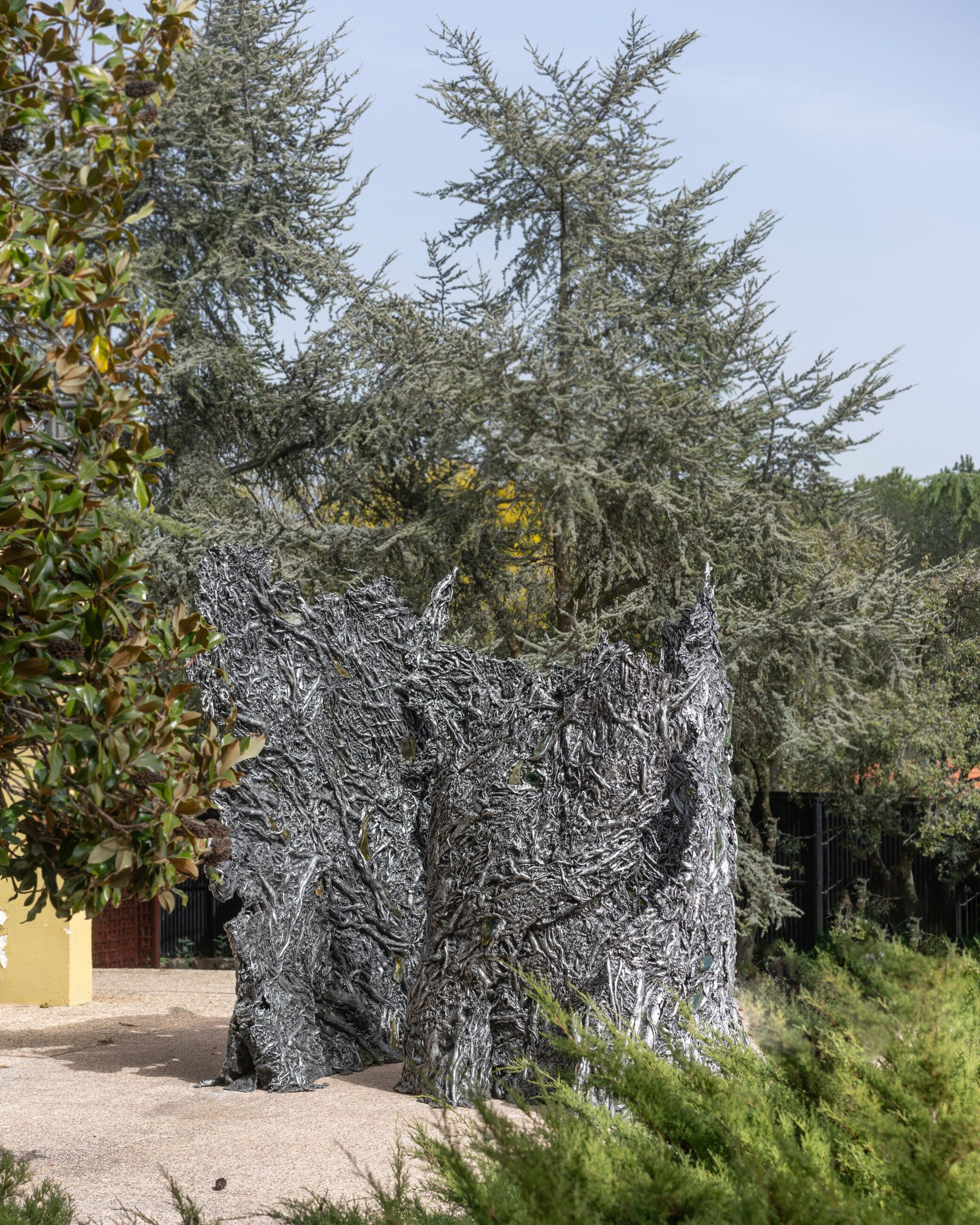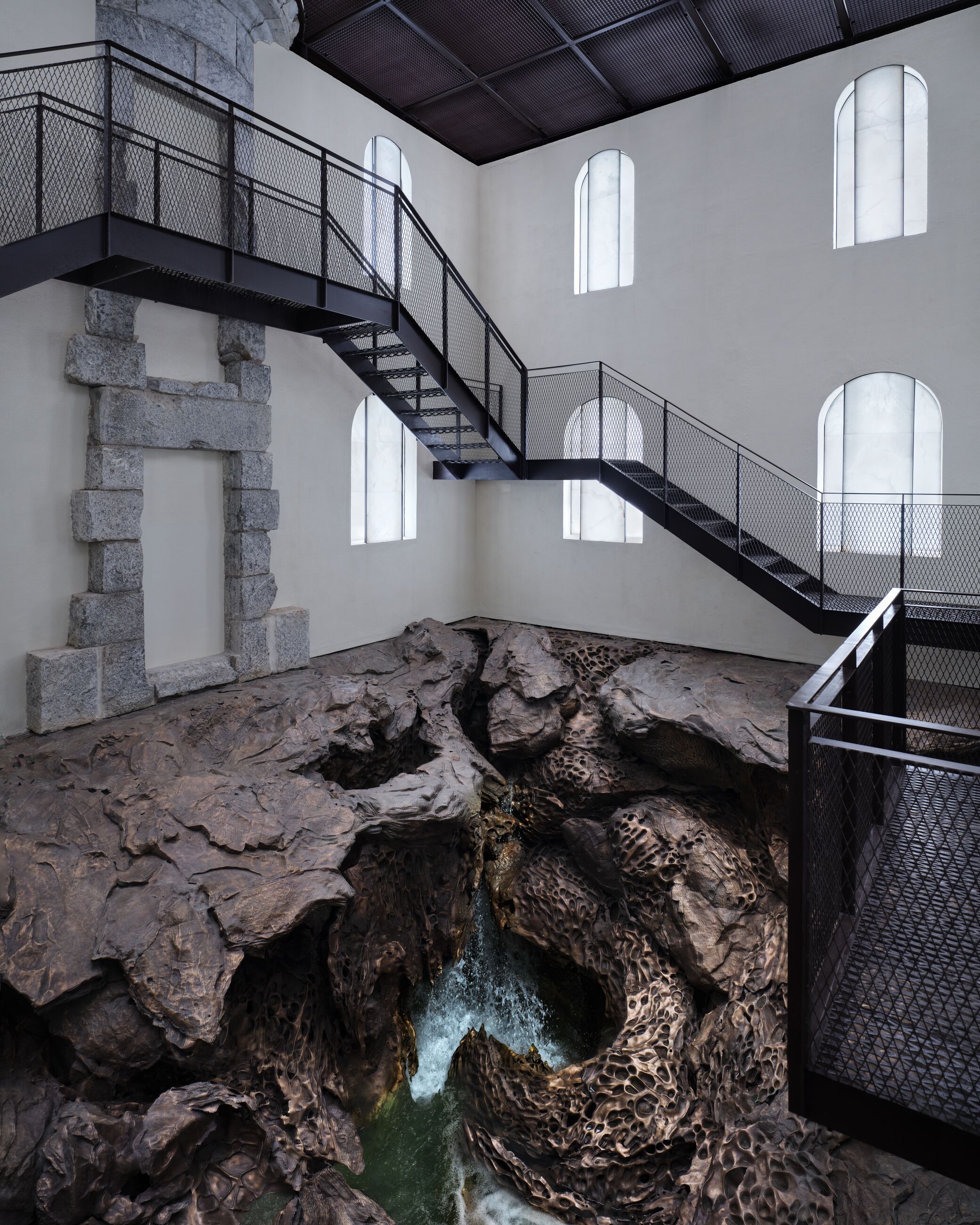Announcing Worldwide Representation of Cristina Iglesias

Cristina Iglesias, 2017 © Cristina Iglesias
Announcing Worldwide Representation of Cristina Iglesias
We are honored to announce worldwide representation of Spanish artist Cristina Iglesias.
Over more than four decades, Cristina Iglesias (b. 1956, Donostia-San Sebastián, Spain) has defined a unique sculptural vocabulary, creating immersive and experiential environments that reference and unite architecture, literature, psychology, mechanics, natural elements and site-specific content. Guided by a profound cultural and historical sensitivity, as well as a deep concern for the natural world, Iglesias’ works poetically redefine the viewer’s relationship to time and place.
Iglesias creates imaginative arenas, accessible to the viewer both psychologically and physically, to explore ideas of memory, reverie and refuge. Her formal language fuses manmade and organic materials to create structures ranging from screens, pavilions and latticed panels to tidal pools and deep wells.
‘I am interested in the symbolic connotation of growth and metamorphosis. The growth of living creatures has its own rhythm and is unstoppable. However, we constantly affect the environments in which we exist, and not always in a positive way. The idea of slowing down proliferation, solidifying millennia of evolution within layers of hardened matter puts our temporal existence into perspective.’
Cristina Iglesias

Cristina Iglesias, Three Suspended Corridors. Corridors I, II, III, 2005, Installation view, Museum Ludwig, Cologne, Germany, 2006 © Cristina Iglesias. Photo: Attilio Maranzano

Cristina Iglesias, Deep Fountain, 1997 – 2006, Permanent installation, Leopold de Waelplaats, Antwerp, Belgium © Cristina Iglesias. Photo: Kristien Daem
Marc Payot, President, Hauser & Wirth said: ‘Over the course of her career, Cristina Iglesias has forged an extraordinary visual language that feels simultaneously unexpected and inevitable. She combines the conventional matter of sculpture—familiar materials such as glass, steel, bronze—with non-traditional materials like water and sound to produce works as powerfully mystical as they are muscular. And as her landmark public commissions prove, she possesses a rare sensitivity to the poetic potentials of natural and architectural space. Cristina’s art reflects on the natural forces we too often ignore or relegate to the background and awakens us to their transformative power in ways that invite us to be more human. We are honored to welcome Cristina to Hauser & Wirth. We look forward to sharing her work with new audiences in the months and years ahead, and to exploring together the connections between her achievements and those of artists in our program she considers touchstones, including Eva Hesse and Louise Bourgeois.’
We will present a new sculptural work by Iglesias at Art Basel from 16 – 22 June 2025 entitled ‘Entwined VI’ (2025). The artist’s first exhibition with the gallery will open in London on 14 October 2025. Iglesias’ solo exhibition at Fundació Catalunya La Pedrera, Barcelona, Spain will be on view from 8 October 2025 – 25 January 2026.
Iglesias’ work has been presented in more than 60 solo and group exhibitions around the world. She has created major public art commissions for Antwerp, Belgium; Baja California, Mexico; Bloomberg Headquarters, London; Instituto Inhotim, Brazil; Madison Square Park, New York NY; Museo del Prado, Madrid; Museum of Fine Arts, Houston TX; Toledo, Spain; Santa Clara Island, San Sebastián, Spain; Royal Academy of the Arts, London and more. She has represented Spain at the Venice Biennale (1986, 1993), and participated in the Biennale of Sydney (1990, 2012), the Taipei Biennial (2003), the Carnegie International (2003), the SITE Sante Fe Biennial (2006) and the Folkestone Triennial (2011).

Cristina Iglesias, Growth I, 2018 © Cristina Iglesias. Photo: Luis Asín

Cristina Iglesias, Hondalea (Marine Abyss), 2021, Permanent installation, Lighthouse on Santa Clara Island, San Sebastian, Spain © Cristina Iglesias. Photo: José Luis López de Zubiria
About the Artist
Cristina Iglesias was born in Donostia-San Sebastián, Spain, in 1956. She currently lives and works in Madrid, Spain. Iglesias pursued a degree in chemical sciences at the University of the Basque Country, before studying ceramics and drawing in Barcelona. She then continued her studies at Chelsea School of Art, moving to London in 1980. This interdisciplinary approach and her interest in experimentation laid the foundations for her art, ‘Drawing and working with clay was always, and still is, a way of thinking, but I was also very interested in science, particularly the laboratory part of it, the exploration,’ Iglesias says.
Iglesias returned to Spain from the UK in the early 1980s, where she developed a distinctive sculptural language of quasi-architectural forms—walls, pavilions, archways, canopies, ceilings—that carved out precarious enclosures and shelters in dialogue with the exhibition space. Using conventional materials such as iron, aluminum and cement in combination with alabaster, glass and textiles, Iglesias’ sculptures from this period are at once objects and places, experimenting with lightness, perforation and translucency to open up spaces in a way that shifts perception of the environments they inhabit. In 1988, Iglesias was granted a Fulbright scholarship to study at Pratt Institute, New York.
Over the course of the 1990s, Iglesias’ practice continued to evolve, fusing natural textures cast from vegetation—including eucalyptus and bamboo—with architectural forms to create the opaque chambers and screens of her ‘Vegetation Rooms’. In 1993, she represented Spain at the Venice Biennale for a second time showing alongside Antoni Tàpies. She was appointed Professor of Sculpture at the Akademie der Bildenden Künste in Munich, Germany in 1995. She also created her first outdoor piece, an installation on the remote island of Moskenes in northern Norway, and realized her first architectural collaboration, a commission from Belgian architects Paul Robbrecht and Hilde Daem. This initiated an ongoing partnership that would later result in her highly acclaimed public work ‘Deep Fountain’ (1997 – 2006). Situated in front of the steps of Antwerp’s Royal Museum of Fine Arts, ‘Deep Fountain’ inserts a heterotopic space and time into the public square as water slowly and cyclically appears and disappears. The ‘fountain’ pool’s bas-relief of plant forms, leaves and fungi can be viewed through the surface reflections that become part of the work.
The intangible and indeterminate qualities of light are evident in the series of suspended corridors and pavilions created by Iglesias including ‘Three Suspended Corridors. Corridors I,II, III’ (2005). As Lynne Cooke has remarked of these works: ‘The beguiling shadows cast by the pavilions do not merely dissolve their structures into the ambient space, but their cryptic shards of text, evoking mysterious abyssal realms and fictive worlds far beyond the present context.’

Cristina Iglesias, Untitled, 1993 – 1997 © Cristina Iglesias. Photo: Joshua White / JWPictures.com

Cristina Iglesias, Wet Labyrinth (with Spontaneous Landscape), 2020 – 2022, © Royal Academy of Arts, London © Prudence Cuming Associates Ltd. Photo: Marcus J. Leith
Following this, Iglesias’ focus shifted from the creation of architecture within rooms to the construction of rooms themselves. Works for public sites intervene in urban and non-urban environments to create gathering places that disrupt the fabric of the everyday. Notable works from this period include ‘Estancias Sumergidas’ (2010), three diaphanous pavilions, constructed from latticed concrete walls made up of letterforms, installed on the sea floor of a nature reserve in Baja California. A haven for marine life that exists beyond the reach of most humans, the work’s invisibility and mutability become core components, as Iglesias says, ‘the fact that it exists down there, and it is alive, invites a certain amount of belief.’
Water has featured as a significant element in Iglesias’ practice since the early 2000s, fundamental to large-scale installations such as ‘Tres Aguas’ (2014) in Toledo, Spain; ‘Forgotten Streams’ (2017) for the Bloomberg headquarters in London and ‘Hondalea’ (2020 – 2021), a monumental work located within an excavated lighthouse on the island of Santa Clara, Spain. Here, Iglesias’ sculptural installation reveals the topography of the bay of San Sebastián and the nearby coast. Within this bronze vessel, water ebbs to the rhythm of the tides, its sound adding to the immersive qualities of the work. In drawing on the multiple histories and roles of water, Iglesias harnesses its flows, ripples, reflections and tumults to explore notions of time, memory and the past.
Iglesias’ installations redefine perceptions of architectural and natural spaces while engaging deeply with the history of place. Today, she continues to pursue concerns with the subterranean and the slow time of the organic and geological world. Recent installations such as ‘Landscape and Memory’ (2022) in New York’s Madison Square Park unearth the natural and cultural histories of built urban environments, uncovering a fragile world of forgotten waterways, hidden roots and vegetation, with these ideas of phreatic spaces and natural growth echoed in the artist’s sculptural production. Seeking to inspire an understanding that the world is more expansive than our senses can register, Iglesias’ work effects a profound reorientation of our presence in the world.
The prominent public collections which have holdings of Iglesias’ work throughout the world include the Centre Georges Pompidou, France; Fundação Serralves, Portugal; Institut Valencià d’Art Modern (VAM), Spain; Kunsthalle Bern, Switzerland; Museo de Arte Contemporáneo de Barcelona (MACBA), Spain; Museo Guggenheim Bilbao, Spain; Hirshhorn Museum, Washington DC; Solomon R. Guggenheim Museum, New York NY; Museum of Modern Art, New York NY; and Tate Modern, UK. She is the recipient of the Sorolla Medal from the Hispanic Society in New York (2024); Royal Academy Architecture Prize (2020); National Graphic Arts Award Spain (2019); Grosse Kunstpreis Berlin (2012); and Spain’s National Visual Arts Prize (1999), among others.
Related News
1 / 5




